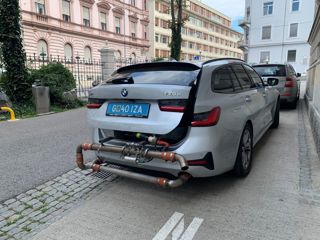Fleet operators and company car drivers are unable to make educated decisions on future vehicles due to a lack of WLTP CO2 emissions data.
Venson is urging manufacturers to publish the WLTP CO2 figures for new cars, which affects all vehicles registered after April 6, 2020.
Currently, NEDC-correlated (or back-translated) figures are used for tax purposes and the majority of car manufacturers are only publishing these figures.
Simon Staton, director of client management at Venson Automotive Solutions, said: “Following the Government’s company car benefit-in-kind tax band announcement we are being asked by customers and prospects to provide quotes on cars - including tax calculations - for delivery pre- and post-April 6, 2020, but the WLTP CO2 data is not available.
“We know that motor manufacturers have the WLTP CO2 data because the NEDC-correlated or converted figure currently available for each car is derived from it. Therefore, it seems illogical that the information is not readily available so fleet decision-makers can review future company car choice lists - particularly where a CO2 emission cap is in place - and drivers can make decisions on their next company car.”
The Government published company car benefit-in-kind bands for 2020/21 and the following two financial years earlier this month (July), but it announced in the November 2017 Budget that WLTP CO2 information would be used for company car benefit-in-kind tax purposes from April 6, 2020.
Fleet News looked at the online configurators and price lists for the UK’s 10 best selling cars (according to SMMT data), and found that only one manufacturer was providing the WLTP figure.
Ford, Vauxhall, Nissan, Mercedes-Benz, Mini and Toyota only provided NEDC correlated data.
Volkswagen was the only brand - among those in the top 10 for sales - to provide the WLTP figure through its online configurator tool.
Venson Automotive Solutions says industry data providers, which supply contract hire and leasing companies and major fleets with tax, service, maintenance and repair and residual value information, are also unable to source the required figures en masse.
Some motor manufacturers said WLTP CO2 data would not be published until closer to the April 6, 2020 date. Others said they understood the requirement for WLTP CO2 emission data and were looking to make the information available as soon as possible, while some manufacturers said the data was accessible on their websites, but admitted greater accessibility was required.
In publishing the new company car benefit-in-kind tax rates, following an in-depth review, the Government said respondents provided data showing increases in CO2 values ranging from 7% to 40% as a consequence of testing under WLTP rules.
On average, WLTP results were about 20%-25% higher than NEDC figures with cars with smaller engines, and lower emissions, impacted the most and diesel cars slightly more than petrol models.
Staton added: “With such variance in CO2 emissions between the old NEDC system, the current NEDC-correlated regime and the new WLTP rules it means that benefit-in-kind tax will be higher on many company cars as a result of WLTP.
“That is despite the Government reducing most rates for cars first registered from April 6, 2020, by two percentage points in 2020/21 compared to those registered before April 6, 2020 before returning to planned rates over the following two years - increasing by one percentage point in 2021/22 and a further one percentage point in 2022/23.
“Therefore, when company cars are ordered, delivered and first registered - pre- or post-April 6, 2020 - is now a critical issue for fleet decision-makers and company car drivers. They need all the data in front of them to make the required calculations and decisions, but they cannot do so if WLTP CO2 information from motor manufacturers is not published and easily available.”






















The Engineer - 01/08/2019 18:41
Its effectively part of the 'price' of the car. You don't buy something in a shop without knowing what its going to cost. So the obvious thing here will be to not buy cars from manufacturers without figures. I am sure the message will sink in via their balance sheets. We can only draw the obvious conclusion for them withholding it, its not good news and worse than expected for many vehicles.